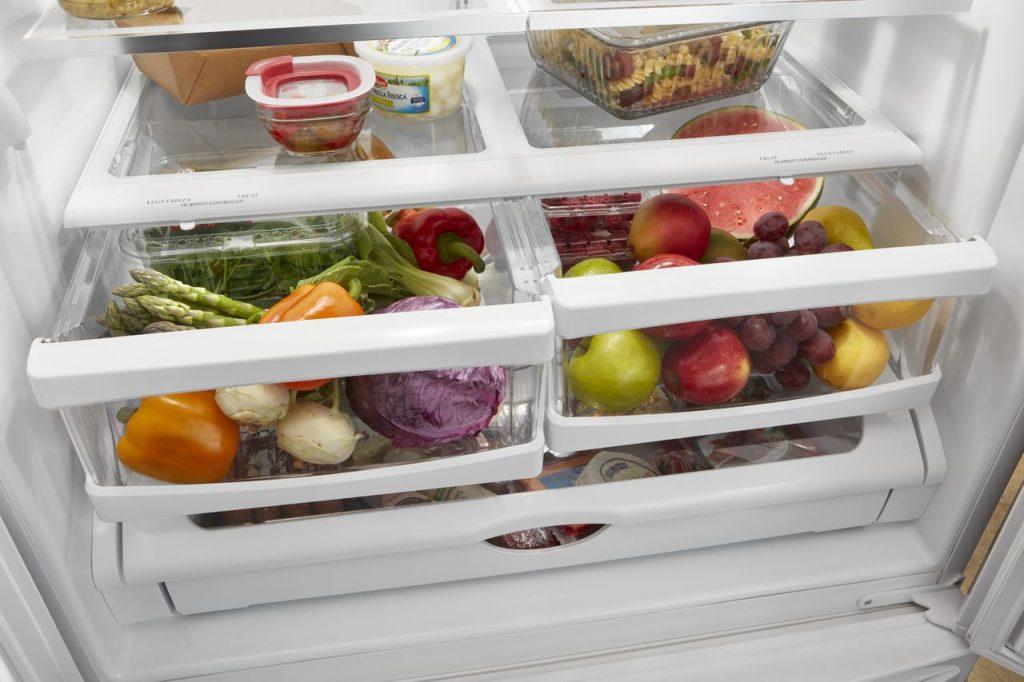Has it ever happened that you went to get something from your fridge and noticed it was not cooling? But that is weird because the light is one. How can it be possible that the refrigerator is not doing its primary job, but the light that indicates its cooling is working?
It is a weird situation, right? Now, if you are a curious person like me, you would go: “That is very interesting, but how is it possible?”. And then you would probably go up on the internet and try to figure out the reasons why it has happened and if there are any DIY solutions that you can try to fix the problem yourself.
You had faith that a fridge you bought would function optimally for its entire warranty period. Correct? However, you may quickly resolve the occasional tiny issue that does develop. One such issue is a refrigerator with an on light and no cooling. You must do inspections to return the appliance to its original operating state. This article focuses on a list of things to look at if the fridge is not chilling, but the light is operational.
Check also: Fire TV Keeps Freezing
Table of Contents
Knowing How to Use a Refrigerator
This compressor pumps nitrogen vapour. The temperature rises as a result. The condenser coil receives the vapour. In the condenser coil, the heated gas cools and condenses into liquid. The expansion valve allows the cold liquid to pass through. It penetrates the refrigerator and freezer’s evaporator coils.
While passing through the evaporator coils, the liquid evaporator absorbs the heat. The refrigerant transforms into vapour before returning to the compressor. The cycle continues. It is a condensed explanation of how the fridge functions. A vapour compression cycle is what it is termed. We can now address the issues.
Why Is The Refrigerator Never Chilling, But The Beam Is On A Problem?
- Power Sources
Well, what comes to mind when you think about light? You are correct—the source of electricity. First, turn off the outlets and the refrigerator before beginning the repair. This now includes the elimination of any nearby objects close to the refrigerator.
You will check the electricity first if your refrigerator breaks. You will relocate any appliances and turn off the electricity at the outlets. Plug a minor appliance to check whether it turns back on as a test.
- Thermometer
The thermostat setting knob is undoubtedly necessary if the refrigerator is chilly. Has the thermostat been cranked up high? The compressor will then stop operating. Similar circumstances require that the knob be set to a low temperature and checked to see whether the compressor turns on. If not, the temperature controller is the cause of the issue.
Rotate the knob to a lower setting and listen for any changes. If it stays the same, the temperature controller is most likely the origin of the problem. Do not attempt to deal with the controller independently since this might be risky and outside your area of competence. Therefore, if your refrigerator is not chilling, but the light is on, contact a repair services professional unless you are excellent, do it yourself.
- Airflow
Please note that enough airflow must exist all around the refrigerator to function normally. Three inches must be left between both the walls and the refrigerator. Do you face a challenge? And after that, relocate the refrigerator.
- Condenser Coils
Have you seen the black coils behind the refrigerator? Condenser coils are what they are called. They are in charge of cooling everything down. They will be unable to remove the heat if they are loaded with dirt. So, you may thoroughly clean the condenser coils every six months using a vacuum or brush. It is one of the primary causes of a refrigerator that would not chill, but things are getting better.
- Compressor
One of the crucial components of the refrigerator. Have you tried each of the options mentioned above? If the issue persists, the fridge may be unplugged from the outlet for two hours. Reconnect it now and check to see whether the compressor turns on. If the answer is affirmative, the compressor’s overheating is the issue. And the circumstance necessitates that you contact a fridge repair specialist.
- Defrost Mode
Do you own an old-style refrigerator? The defrost option must then be executed manually. The button may occasionally get caught inside the freezing mode. And the refrigerator’s chilling function can quit. Users may reset the switch to an appropriate setting to restore the refrigerator to its original operational state.
An automatic defrost feature will be present in the new model. Therefore, this freeze clock unit may be the cause of the issue. It is best to consult a fridge repair specialist in order to determine the problem.
- Incorrect evaporator fan
The refrigerator cannot operate correctly if the food is not cooling adequately. This can be a result of the evaporator fan not functioning correctly. The fans are often the issue that must be fixed if the pump is operating, but the fridge is still not cooling.
Strange noises are coming from this refrigerator. You could hear screaming or chirping from within the refrigerator whenever the cooling system malfunctions. Whereas if the fridge was opened, the sound would also get louder. Check the cooling fan and evaporator coils located underneath the refrigerator compartment.
First, disconnect the refrigerator from the dc supply and give it a minimum of 1 to 2 days to defrost. Reconnect the refrigerator’s power once all of the ice has defrosted. If it is now operational, the defrost timer or thermostat may have malfunctioned and caused the frost.
Conclusion
Have you read the entire article? You must be aware of the causes of the refrigerator’s inability to chill when the light is on; take the necessary action to restore the appliance’s functionality. If you can solve it yourself, great, but if you are facing too many problems, please do not hesitate to call the serviceman.

Virat Raj is a Digital Marketing Practitioner & International Keynote Speaker currently living a digital nomad lifestyle. During his more than 10 years-long expertise in digital marketing, Virat Raj has been a marketing consultant, trainer, speaker, and author of “Learn Everyday yourself: In Pursuit of Learning” which has sold over 10,000 copies, worldwide.

